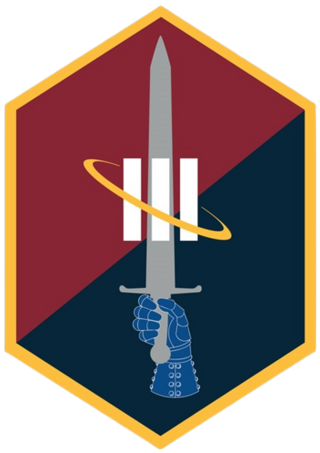
The 374th Airlift Wing is a unit of the United States Air Force assigned to Fifth Air Force. It is stationed at Yokota Air Base, Japan. It is part of Pacific Air Forces. The 374th Airlift Wing is the only airlift wing in PACAF and provides airlift support to all Department of Defense agencies in the Pacific theater of operation. It also provides transport for people and equipment throughout the Kantō Plain and the Tokyo metropolitan area.

The 445th Airlift Wing is an Air Reserve Component of the United States Air Force. It is assigned to the Fourth Air Force, Air Force Reserve Command, stationed at Wright-Patterson Air Force Base, Ohio. If mobilized, the wing is gained by the Air Mobility Command.

The 446th Airlift Wing is an Air Reserve component of the United States Air Force. It is assigned to the Fourth Air Force, Air Force Reserve Command, stationed at McChord AFB, Joint Base Lewis-McChord, Washington. The 446th is an associate unit of the 62d Airlift Wing and if mobilized the wing is gained by Air Mobility Command.

The 437th Airlift Wing is an active unit of the United States Air Force, assigned to 18th Air Force, Air Mobility Command. It is the mission wing at Charleston Air Force Base, Joint Base Charleston, in the City of North Charleston, South Carolina.

The 21st Airlift Squadron is part of the 60th Air Mobility Wing at Travis Air Force Base, California. It operates C-17 Globemaster III aircraft carrying out United States Air Force global transport missions, duties which involve airlift and airdrop missions as well as provision of services and support in order to promote quality of life for both soldiers and civilians in situations requiring humanitarian aid.

The 22nd Airlift Squadron, sometimes written as 22d Airlift Squadron, is part of the 60th Air Mobility Wing at Travis Air Force Base, California. It operates C-5M Galaxy aircraft supporting the United States Air Force global reach mission worldwide. The mission is to provide services and support which promote quality of life and project global power through combat-proven airlift and airdrop.

The 36th Airlift Squadron is an airlift squadron of the United States Air Force. It is part of the 374th Operations Group at Yokota Air Base, Japan.

The 53d Airlift Squadron is an inactive United States Air Force unit, last part of the 19th Airlift Wing at Little Rock Air Force Base, Arkansas. It operated Lockheed C-130 Hercules aircraft for airlift and airdrop operations.

The 37th Airlift Squadron is part of the 86th Airlift Wing at Ramstein Air Base, Germany. It operates Lockheed C-130J Super Hercules aircraft providing theater airlift.

The 317th Airlift Squadron is part of the 315th Airlift Wing at Charleston Air Force Base, South Carolina. It operates C-17 Globemaster III aircraft supporting the United States Air Force global reach mission worldwide. It continues the histories of three squadrons with airlift missions that bear the number 317.

The 459th Airlift Squadron is part of the 374th Airlift Wing at Yokota Air Base, Japan. It operates the UH-1N Iroquois and the C-12J Huron aircraft, performing passenger transport, aeromedical evacuation and search and rescue missions.

The 315th Air Division is an inactive United States Air Force formation. Originally designated the 315th Bombardment Wing, it was activated in July 1944 at Peterson Field, Colorado as a command and control organization for four very heavy B-29 Superfortress bombardment groups. It supervised the 16th, 331st, 501st and 502nd Bombardment Groups in the Mariana Islands during the last stages of the Second World War. Its last assignment was with Pacific Air Forces, based at Tachikawa Air Base, Japan. The division was inactivated in April 1969.

The 60th Operations Group is a United States Air Force unit assigned to the 60th Air Mobility Wing. It is stationed at Travis Air Force Base, California.

The 316th Operations Group is the flying component of the Air Force District of Washington 316th Wing, stationed at Andrews Air Force Base, Maryland. It provides rotary-wing contingency response support capability to the United States National Capital Region while also supporting regional and global customers with critical airfield infrastructure and aviation services. The group consists of two squadrons of aircrew and support personnel.

Space Base Delta 3 is a United States Space Force unit assigned to the Space Systems Command. The unit is stationed at Los Angeles Air Force Base, California. It is the successor to the 61st Air Base Group of the United States Air Force and the Los Angeles Garrison, which existed through the first two years of the Space Force. The garrison operates Los Angeles Air Force Base and supports Space Systems Command.

The 315th Operations Group is a United States Air Force Reserve unit assigned to the 315th Airlift Wing. The unit is stationed at Charleston Air Force Base, South Carolina. The 315th Group controls all operational McDonnell Douglas C-17 Globemaster III flying squadrons of the 315th Airlift Wing. It was activated in 1992, when Air Force Reserve Command implemented the Objective Wing organization.

The 439th Operations Group is an active United States Air Force Reserve unit. It is the flying component of the Twenty-Second Air Force 439th Airlift Wing, stationed at Westover Air Reserve Base, Massachusetts.

The 403rd Operations Group is the operational flying component of the United States Air Force Reserve 403rd Wing. It is stationed at Keesler Air Force Base, Mississippi.

The 433rd Operations Group is the operational flying component of the United States Air Force Reserve 433rd Airlift Wing. It is stationed at Lackland Air Force Base, Texas.

The 375th Operations Group is the operational flying component of the United States Air Force 375th Air Mobility Wing. It is stationed at Scott Air Force Base, Illinois.






















